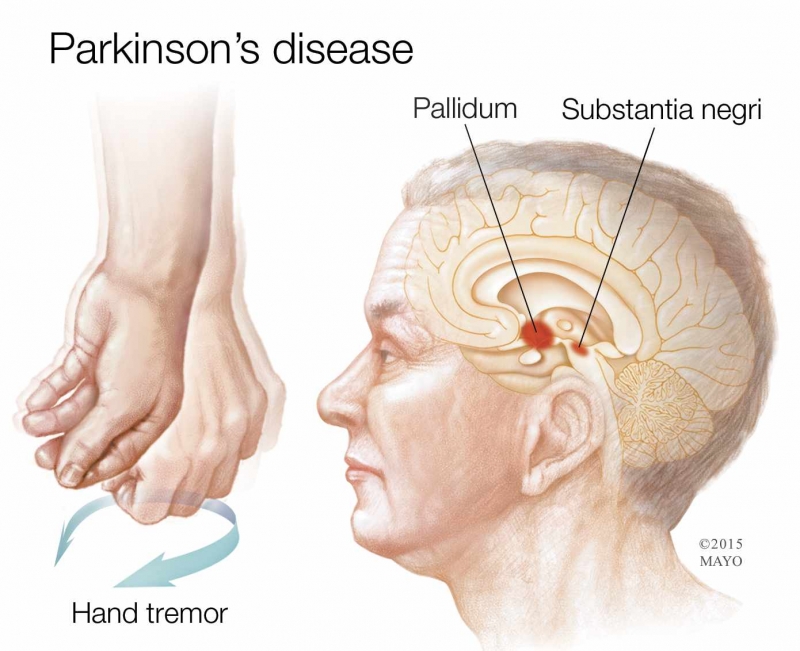
Parkinson's disease is a progressive disorder of the nervous system that generally affects movement. It is a long-term degenerative disorder of the central nervous system. The patient feels the most prominent effects on the motor system. The symptoms of the disease develop gradually starting with minor signs like a barely noticeable trembling of one of the hands. With time, other symptoms like shaking, rigidity, slowness of movement and difficulty of walking start registering their presence. Thinking and other behavioral problems may also follow. As the disease progresses towards its advanced stages, dementia becomes common. Get an effective treatment for Parkinson's Disease in Gurgaon at PAL Physiotherapy from best physiotherapist. Although, the exact cause of the disease is unknown, genetic and environmental factors are often held responsible for the same. The disease is also known by some other names like ‘Parkinson disease’, ‘idiopathic or primary parkinsonism’, ‘hypokinetic rigid syndrome’, ‘paralysis agitans’, ‘shaking palsy’.
Although the exact cause of the disorder is unknown, speculations suggest that some genetic and environmental components may be responsible for causing the disease. Some texts even hold viruses responsible for triggering Parkinson’s disease.
Lower levels of dopamine and norepinephrine, a substance that regulates dopamine, have been linked with the development of Parkinson’s disease. People with the disease have also shown the presence of some abnormal proteins called Lewy bodies in their brains. However, the exact role of Lewy bodies in the development of Parkinson’s disease is yet unknown.
Some environmental factors around the patient are often held responsible for the development of the disease. According to some scientists, exposure of the patient to pesticides along with a medical history of head injury have both been connected with Parkinson disease (PD). The risks, however, are modest. Never having smoked cigarettes, and never drinking caffeinated beverages, have also been linked often with small risks of developing PD.
Low concentrations of urate in the blood serum is also one of the key factors responsible for an increased risk of Parkinson’s Disease
Deep research on the disorder has revealed that Parkinson’s disease is the product of a complex interaction of genetic and environmental factors. Almost 15% of the patients with the disorder have a first-degree relative who has the disease and are likely to inherit the disease from them.
Another 5–10% of people with Parkinson’s disease are known to have forms of the disease that occurs due to a specific kind of mutation in one of the several specific genes.
However, contrary to popular beliefs, harboring one of these gene mutations may not lead to the disease. These factors along with some other lesser-studied factors are known to contribute towards the development of the disease.
The signs and symptoms of the disease vary from patient to patient and can even be different for everyone. Some of the earlier signs may be too mild to be noticed and often go unnoticed. It is a common observation that symptoms often begin on one side of your body. These usually grow worse on that side, even after symptoms begin to affect both sides.
Some of the most common symptoms of the disorder are -
Although there are no specific tests for the diagnosis of the disease, one of the initial assessments of the Parkinson's disease is carried out with a careful study of the medical history of the patient along with a neurological examination. The patient may be given levodopa, with any resulting improvement in motor impairment helping to confirm the diagnosis of the disease. The presence of Lewy bodies in the midbrain on autopsy is usually considered as the ultimate proof of the patient being a victim of the disease.
In some cases, the clinical course of the illness over time may even reveal that the disease is not Parkinson's disease. This implies that the clinical presentation is periodically reviewed to confirm an accurate diagnosis of the disease.
There is no proper cure for Parkinson's disease. But, some forms of physiotherapy activities can help reduce the severity of your symptoms.
You may also be recommended certain changes in lifestyle, especially ongoing aerobic exercises. In some cases, physical therapy focusing more on balance and stretching also is important and advised. A speech-language pathologist may help improve your speech problems and reduce the related symptoms.
The physical therapy for Parkinson’s disease treatment in Gurgaon emphasizes exclusively on gait retraining and motor control relearning, in order to help the patient overcome or reduce postural instability. Training the patient to focus on foot positioning to provide a more stable base for posture and gait is one of the most crucial aspects of the therapeutic process.
Further, in partnership with a neurologic music therapist, the physical therapist can organize physical therapy exercises in a rhythmic fashion. Other specific exercises like aerobic conditioning are also important.
Some other techniques such as teaching the individual to turn around in a wide arc instead of pivoting are also included in the plan. This helps the patient avoid the risk of loss of balance and postural stability, thus decreasing the risk of falls.
